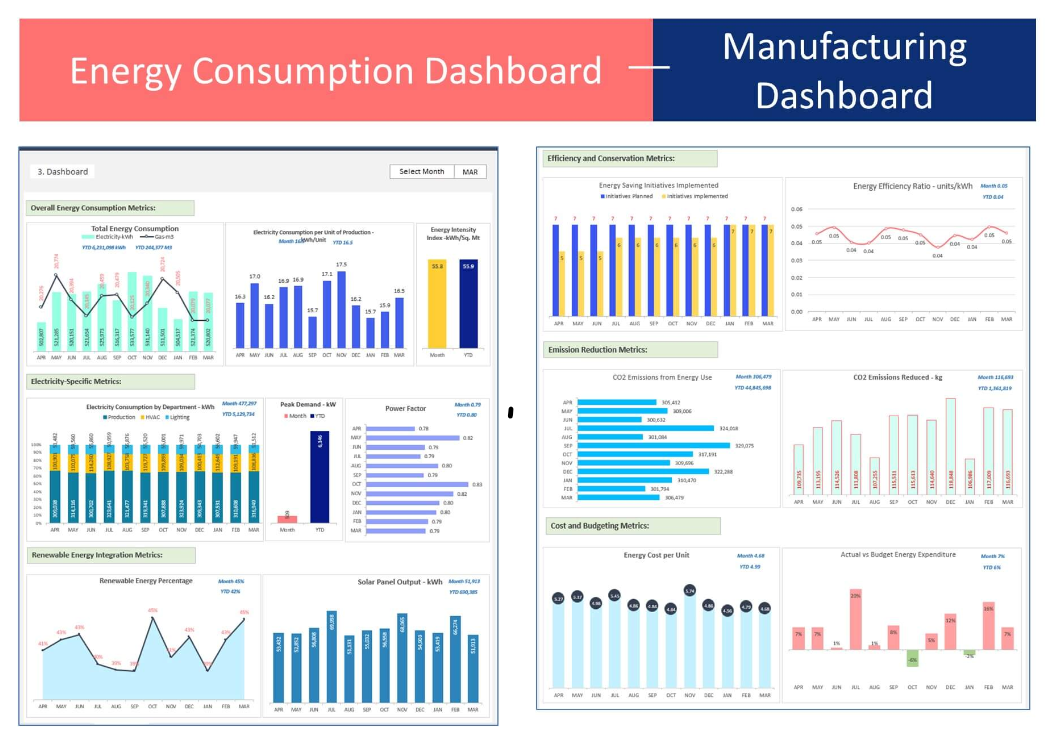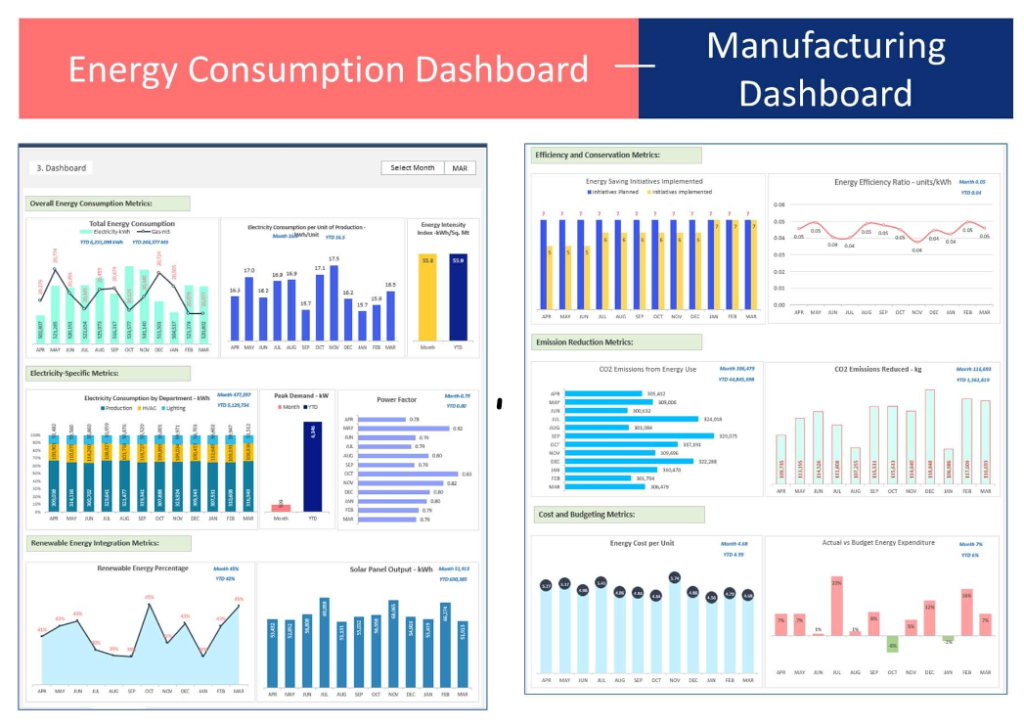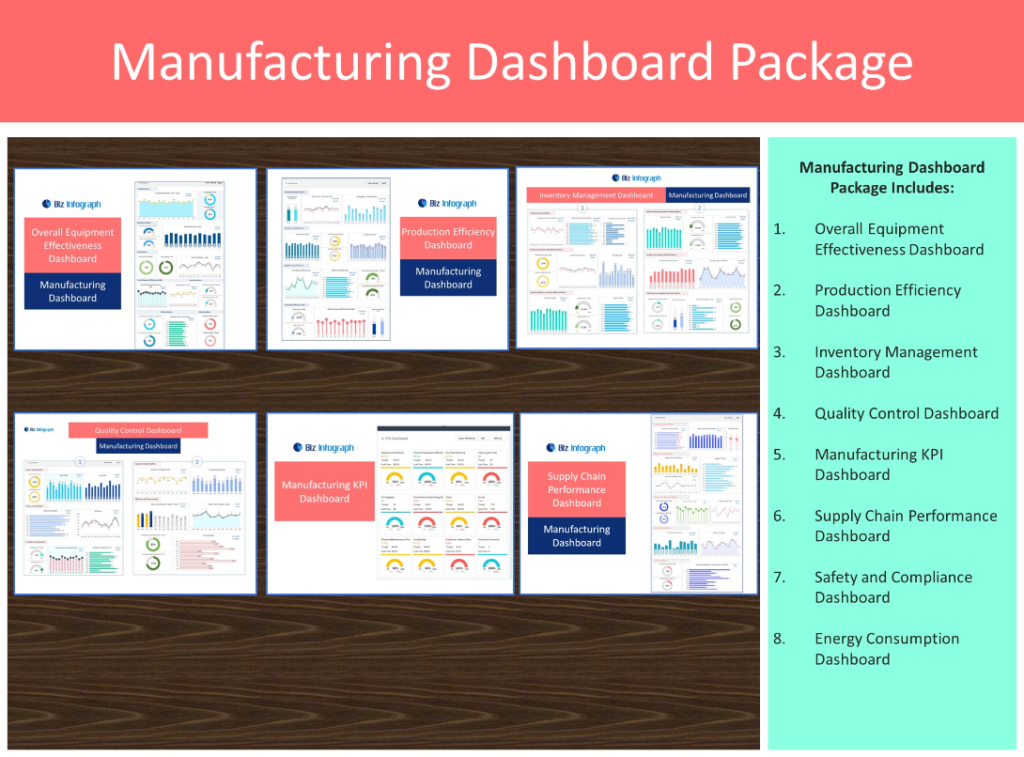Introduction to Energy Dashboards
The Role and Importance of Energy Dashboards
Energy dashboards are critical tools for managing energy consumption effectively. They provide users, from household to corporate levels, with real-time visibility into their energy usage, helping to identify patterns and inefficiencies. By presenting data on energy consumption, cost, and carbon footprint in an accessible format, these dashboards empower users to make informed decisions about their energy use, leading to significant cost savings and reduced environmental impact. They are particularly crucial for energy suppliers facing fast-changing market demands, offering a way to optimize production costs and improve overall profitability in the long run.
Key Features of an Effective Energy Monitoring Dashboard
An effective energy monitoring dashboard is characterized by its user-friendly interface, real-time data updates, and customizable views. It should offer an overview of total energy consumption, breakdowns by sector or source, and performance indicators like total sales or shareholder return. Features should include data analysis tools, indicator metrics for consumption by sector, and the ability to monitor energy production and consumption.
Understanding Energy Consumption and Metrics
Core Metrics for Monitoring Energy Usage
Core metrics for monitoring energy usage include total consumption, energy use per source (like solar, electricity, or fossil fuels), and efficiency indicators such as the performance ratio and operating cash flow. Tracking these metrics helps energy suppliers cover fast-changing market demands and optimize production costs. It also assists businesses and households in reducing their dependency on non-renewable energy sources, leading to more sustainable energy consumption patterns.
Analyzing Consumption Patterns Across Different Sectors
Analyzing consumption patterns across different sectors is vital for understanding and managing energy consumption effectively. Energy dashboards should display sector-specific data, such as the amount of energy used by industrial, residential, and commercial sectors. This information is crucial for identifying high-demand areas, optimizing energy allocation, and implementing sector-specific energy-saving measures. By monitoring dashboard answers to several key questions for managing energy consumption, stakeholders can make informed decisions to reduce energy usage and costs while enhancing sustainability.
Energy Dashboard Analytics and Insights
Leveraging Analytics for Improved Energy Efficiency
Leveraging analytics in energy dashboards allows users to extract actionable insights from their energy data, leading to improved energy efficiency. By analyzing patterns and trends in energy use, businesses and households can identify opportunities to save energy, decrease operational downtime, and reduce overall energy costs. Analytics can also help in forecasting future energy needs, enabling users to plan and implement energy-saving strategies effectively.
Transforming Data into Actionable Energy-Saving Strategies
Energy dashboards transform complex data sets into actionable energy-saving strategies by providing clear and comprehensible visualizations of energy usage and efficiency metrics. Users can identify high-consumption periods, evaluate the effectiveness of implemented measures, and continuously monitor the impact of changes in their energy consumption habits. This ongoing evaluation facilitates the optimization of energy use, helping to achieve sustainability goals and reduce carbon emissions.
Energy Management Dashboard: Operational and Financial Overview
Integrating Energy Production Dashboard for Real-Time Monitoring
An energy operational dashboard offers real-time monitoring of energy systems, enabling immediate identification of issues such as power cuts, system overloads, or unexpected spikes in energy use. This real-time information allows for swift responses to operational challenges, minimizing downtime, and ensuring continuous energy supply. Operational dashboards are essential for energy suppliers to cover fast-changing market demands and maintain system reliability.
Navigating Energy Financial Dashboards for Cost-Effective Decisions
Energy financial dashboards provide crucial insights into the economic aspects of energy consumption, including production costs, energy pricing, and net income. By tracking these financial indicators, users can make cost-effective decisions that not only optimize production costs but also increase the overall profitability in the long run. Financial dashboards illustrate the direct correlation between energy consumption patterns and financial performance, guiding users toward more economical energy usage.
Renewable Energy Tracking and Sustainability
Monitoring Renewable Energy Sources and Production
Monitoring renewable energy sources and production is crucial for advancing sustainability goals. Energy dashboards that focus on renewable sources, like solar or wind energy, help track progress towards reducing reliance on fossil fuels and increasing the use of cleaner, more sustainable energy options. They provide an overview of energy production from renewable sources, enabling users to track improvements, understand the impact of renewable energy investments, and make informed decisions to support sustainable development.
Promoting Sustainable Energy Use through Dashboard Insights
Energy dashboards promote sustainable energy use by providing insights into energy consumption patterns, renewable energy production, and efficiency measures. They help users identify ways to reduce their carbon footprint, switch to renewable energy sources, and implement sustainable practices in their daily operations. By offering a clear view of the environmental impact of energy use, dashboards encourage more responsible energy consumption and contribute to broader sustainability efforts.
Dashboard Templates and Customization
Selecting the Right Template for Your Dashboard to Track Energy
Selecting the right template for your energy dashboard involves identifying the specific needs and goals of your energy monitoring. Templates should offer customizable features to fit various energy monitoring needs, from basic consumption tracking to advanced analytics for large-scale industrial energy management. The right template will provide a balance between comprehensive data representation and user-friendly design, making energy monitoring accessible to all user levels.
Customizing Dashboards to Fit Specific Energy Monitoring Needs
Customizing dashboards allows users to tailor the platform to their specific energy monitoring needs. This customization can range from adjusting the date range for energy consumption reviews to selecting specific metrics to be displayed, such as kWh usage, number of power cuts, or energy cost per kWh. Customizable dashboards enable users to focus on the most relevant data, providing a clearer understanding of energy use and facilitating more effective energy management.
Implementing Energy Efficiency Measures
Identifying Opportunities to Save Energy and Reduce Production Costs
Identifying opportunities to save energy involves analyzing dashboard data to pinpoint inefficiencies and areas with excessive energy use. By tracking trends and anomalies in energy consumption, users can target specific areas for improvement, such as upgrading inefficient equipment, adjusting operational hours, or optimizing heating and cooling systems. Implementing targeted energy efficiency measures can significantly reduce energy costs and contribute to environmental sustainability.
Strategies for Enhancing Energy Efficiency in Power Plants and Facilities
Enhancing energy efficiency in power plants and facilities requires comprehensive strategies that encompass technology upgrades, process optimizations, and employee training. Energy dashboards play a key role in devising these strategies by providing detailed insights into energy use patterns, equipment performance, and operational efficiencies. By leveraging this data, facilities can implement measures to optimize energy consumption, reduce waste, and improve overall energy performance, leading to lower operating costs and reduced environmental impact.
Sector-Specific Energy Usage and Optimization
Energy Use and Conservation in Industrial Settings
In industrial settings, energy use and conservation are critical to operational efficiency and cost management. Energy dashboards provide an in-depth look at energy consumption by sector, highlighting areas where energy is used most intensively and offering opportunities for optimization. By focusing on key industrial energy metrics, companies can implement targeted energy conservation measures, such as process reengineering and equipment upgrades, to reduce energy consumption and enhance productivity.
Tracking and Optimizing Energy in Residential Areas
Energy dashboards for residential areas help households track and manage their energy consumption more effectively. By providing a detailed breakdown of energy use by appliance, time of day, and energy source, these dashboards empower residents to make informed decisions about their energy habits. Strategies such as using energy-efficient appliances, optimizing heating and cooling systems, and leveraging renewable energy can lead to significant savings and a smaller carbon footprint for households.
Advanced Monitoring for Sustainable Energy Solutions
Integrating Solar Energy and Other Renewable Sources in Your Dashboard
Integrating solar energy and other renewable sources into energy dashboards allows users to track and evaluate the effectiveness of their green energy solutions. This integration helps in assessing the proportion of energy sourced from renewable versus non-renewable sources, monitoring production distribution, and optimizing the use of green energy. It encourages a shift towards more sustainable energy practices and supports the transition to a lower-carbon energy system.
Utilizing Advanced Metrics for Water Heater and Carbon Footprint Reduction
Utilizing advanced metrics in energy dashboards, such as those for water heater efficiency and carbon footprint calculations, can lead to significant energy savings and environmental benefits. By monitoring specific metrics related to water heating and carbon emissions, users can identify inefficiencies and implement measures to reduce energy consumption and lower their carbon footprint. This targeted approach helps in achieving greater sustainability and efficiency, particularly in energy-intensive areas of operation.
Leveraging Energy Dashboards for Environmental Impact
Assessing the Impact of Energy Use on Carbon Emissions
Energy dashboards are essential tools for assessing the impact of energy use on carbon emissions. They provide valuable insights into the total amount of energy consumed and the corresponding carbon footprint, enabling users to understand their environmental impact. By tracking carbon emissions alongside energy consumption, dashboards help users identify opportunities to reduce their carbon output, such as by switching to cleaner energy sources or implementing energy-saving measures.
Dashboard-Driven Approaches to Achieving Energy Sustainability
Dashboard-driven approaches to achieving energy sustainability focus on using data and insights from energy dashboards to inform and guide sustainable energy practices. These approaches involve setting clear sustainability goals, monitoring progress towards these goals, and adjusting strategies based on dashboard data. By providing a detailed view of energy use and its environmental impact, dashboards support informed decision-making and promote the adoption of sustainable energy solutions.
Future Trends in Energy Monitoring and Dashboard Technology
Innovations in Energy Dashboard Features and Functions
The future of energy monitoring and dashboard technology is marked by ongoing innovations, such as the integration of AI and machine learning for predictive analytics, the incorporation of IoT devices for real-time data collection, and the development of more interactive and user-friendly dashboard interfaces. These advancements are expected to make energy dashboards even more powerful and accessible, providing users with deeper insights and more effective tools for managing their energy consumption and environmental impact.
Predicting the Evolution of Energy Consumption Tracking
Predicting the evolution of energy consumption tracking involves looking at current trends and technological advancements in energy monitoring and management. As energy dashboards become more sophisticated and widely adopted, we can expect to see a greater emphasis on real-time data analysis, personalized energy-saving recommendations, and integration with smart home and industrial IoT devices. This evolution will likely lead to more proactive and effective energy management practices, contributing to global efforts towards energy efficiency and sustainability.
You may be interested:


